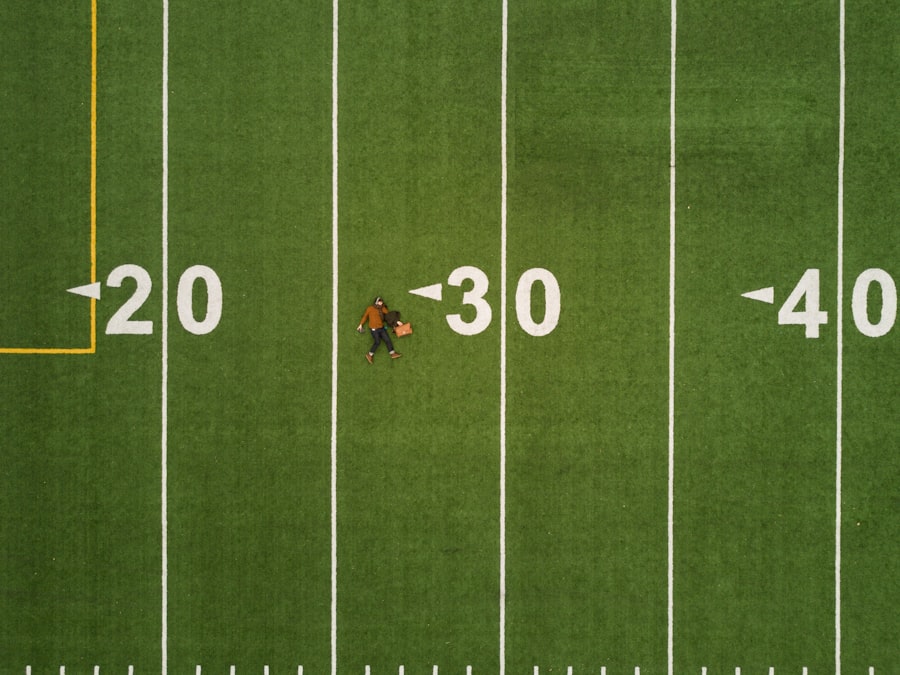In the contemporary landscape of sports, data analysis has emerged as a cornerstone for enhancing performance, strategy, and overall decision-making. The significance of sports data analysis lies in its ability to transform raw statistics into actionable insights. By meticulously examining player performance metrics, game statistics, and even fan engagement data, teams can make informed decisions that can lead to improved outcomes on the field.
This analytical approach not only aids in identifying strengths and weaknesses but also helps in predicting future performance trends, thereby allowing teams to strategize effectively. Moreover, the importance of sports data analysis extends beyond mere performance metrics. It encompasses aspects such as injury prevention, player recruitment, and fan engagement strategies.
For instance, by analyzing historical injury data, teams can identify patterns that may indicate a higher risk of injury for certain players or positions. This proactive approach enables medical staff to implement tailored training regimens aimed at minimizing injury risks. Additionally, understanding fan engagement through data analysis can help franchises tailor their marketing strategies, ensuring they connect with their audience more effectively and enhance overall revenue streams.
Key Takeaways
- Sports data analysis is crucial for enhancing team performance and strategic decision-making.
- Different sports utilize data analysis uniquely to optimize player skills and game tactics.
- Advanced technology, including AI and wearable devices, plays a key role in collecting and interpreting sports data.
- Data-driven insights significantly improve player performance by identifying strengths and areas for improvement.
- Coaches leverage sports data analysis to develop more effective training programs and game strategies.
How Sports Data Analysis is Used in Different Sports
Sports data analysis manifests differently across various sports, each with its unique metrics and methodologies. In basketball, for example, advanced statistics such as Player Efficiency Rating (PER) and Effective Field Goal Percentage (eFG%) are utilized to evaluate player contributions beyond traditional box score statistics. Teams like the Golden State Warriors have leveraged these metrics to build a roster that maximizes shooting efficiency and ball movement, leading to their recent successes in the NBA.
In contrast, football (soccer) employs a different set of analytical tools. Metrics such as Expected Goals (xG) and Pass Completion Rate are pivotal in assessing player performance and team dynamics. Clubs like Manchester City have invested heavily in data analytics to refine their playing style and optimize player acquisitions.
By analyzing the xG metric, coaches can determine the quality of chances created versus those converted, allowing them to adjust tactics accordingly. This nuanced understanding of performance metrics has revolutionized how teams approach both recruitment and in-game strategy.
The Role of Technology in Sports Data Analysis

The integration of technology into sports data analysis has been nothing short of revolutionary. Wearable technology, such as GPS trackers and heart rate monitors, provides real-time data on player movements and physiological responses during training and matches. This technology allows coaches and analysts to monitor players’ workloads, ensuring they are neither overworked nor underprepared for competition.
For instance, teams in the NFL utilize wearable devices to track player speed, distance covered, and even fatigue levels during practice sessions. Furthermore, video analysis software has become an indispensable tool for teams across various sports. Coaches can dissect game footage frame by frame to analyze player positioning, decision-making processes, and tactical execution.
Software like Hudl and Dartfish enables teams to create detailed breakdowns of plays, allowing for targeted feedback during training sessions. This technological advancement not only enhances the quality of training but also fosters a culture of continuous improvement among players.
The Impact of Sports Data Analysis on Player Performance
| Metric | Before Data Analysis | After Data Analysis | Improvement (%) | Notes |
|---|---|---|---|---|
| Player Accuracy (%) | 68 | 82 | 20.6 | Improved shot and pass accuracy through video analysis |
| Average Speed (km/h) | 24.5 | 26.3 | 7.3 | Enhanced conditioning and training plans based on GPS data |
| Injury Rate (per season) | 5.2 | 3.1 | -40.4 | Reduced injuries due to workload monitoring and recovery optimization |
| Successful Tackles (%) | 55 | 68 | 23.6 | Better defensive positioning from tactical data insights |
| Stamina (minutes played per game) | 70 | 85 | 21.4 | Improved endurance through personalized training regimes |
The impact of sports data analysis on individual player performance is profound and multifaceted. By utilizing data-driven insights, players can gain a clearer understanding of their strengths and areas for improvement. For instance, basketball players can analyze shooting percentages from different areas on the court to identify where they are most effective.
This information allows them to tailor their practice sessions to focus on specific skills that need enhancement, ultimately leading to improved performance during games. Moreover, sports data analysis plays a crucial role in mental preparation and confidence building. Athletes often face immense pressure during competitions, and having access to performance data can help alleviate some of that stress.
For example, a baseball player might review their batting statistics against specific pitchers to develop a strategic approach for an upcoming game. This preparation not only boosts confidence but also equips players with the knowledge needed to make informed decisions during high-stakes moments.
The Influence of Sports Data Analysis on Coaching Strategies
Coaching strategies have evolved significantly due to the influence of sports data analysis. Coaches now rely heavily on statistical insights to inform their game plans and in-game adjustments. For instance, in American football, coaches analyze defensive formations and offensive tendencies using advanced metrics to devise plays that exploit opponents’ weaknesses.
The New England Patriots have famously utilized data analytics to gain a competitive edge by tailoring their game plans based on extensive film study and statistical analysis. Additionally, sports data analysis facilitates real-time decision-making during games. Coaches can access live data feeds that provide insights into player performance and opponent tendencies as the game unfolds.
This capability allows them to make informed substitutions or tactical adjustments based on the current state of play. The ability to adapt strategies on the fly has become a hallmark of successful coaching in modern sports.
The Future of Sports Data Analysis

As technology continues to advance at an unprecedented pace, the future of sports data analysis promises even greater innovations. Artificial intelligence (AI) and machine learning are poised to revolutionize how teams analyze data by enabling predictive modeling that can forecast player performance and injury risks with remarkable accuracy. For example, AI algorithms can analyze vast datasets from previous seasons to identify patterns that human analysts might overlook, providing teams with a competitive advantage in player recruitment and game strategy.
Moreover, the integration of augmented reality (AR) and virtual reality (VR) into training regimens is set to enhance the application of sports data analysis further. These technologies can simulate game scenarios based on historical data, allowing players to practice decision-making in a controlled environment. As these technologies become more accessible, teams will likely adopt them as standard practice in training programs, leading to more prepared athletes on game day.
Challenges and Limitations of Sports Data Analysis
Despite its numerous advantages, sports data analysis is not without challenges and limitations. One significant hurdle is the quality and accuracy of the data being collected. Inaccurate or incomplete data can lead to misguided conclusions that may adversely affect team strategies or player development plans.
For instance, if a team relies on faulty tracking technology that misrepresents a player’s speed or distance covered during a game, it could lead to erroneous assessments of their fitness levels or performance capabilities. Another challenge lies in the interpretation of data. While advanced analytics provide valuable insights, they require skilled analysts who can contextualize the numbers within the framework of the sport’s nuances.
Misinterpretation can lead to poor decision-making; for example, overemphasizing certain metrics while neglecting others could skew a coach’s understanding of a player’s true value or potential impact on the team.
How to Implement Sports Data Analysis in Your Team
Implementing sports data analysis within a team requires a strategic approach that encompasses technology adoption, personnel training, and cultural integration. First and foremost, teams must invest in appropriate technology that aligns with their specific needs—this could range from basic statistical software to advanced tracking systems that monitor player performance in real-time. Establishing partnerships with tech companies specializing in sports analytics can provide teams with cutting-edge tools tailored for their requirements.
Training personnel is equally crucial; coaches, analysts, and players must be educated on how to interpret and utilize data effectively. Workshops or seminars led by experts in sports analytics can foster a deeper understanding among staff members about how to leverage data for improved performance outcomes. Additionally, creating a culture that values data-driven decision-making is essential for long-term success; this involves encouraging open communication about insights gained from analysis and fostering an environment where players feel comfortable discussing their performance metrics.
In conclusion, the integration of sports data analysis into team operations is not merely an option but a necessity in today’s competitive landscape. By embracing this analytical approach holistically—through technology adoption, personnel training, and cultural integration—teams can unlock new levels of performance and strategic advantage that were previously unattainable.



